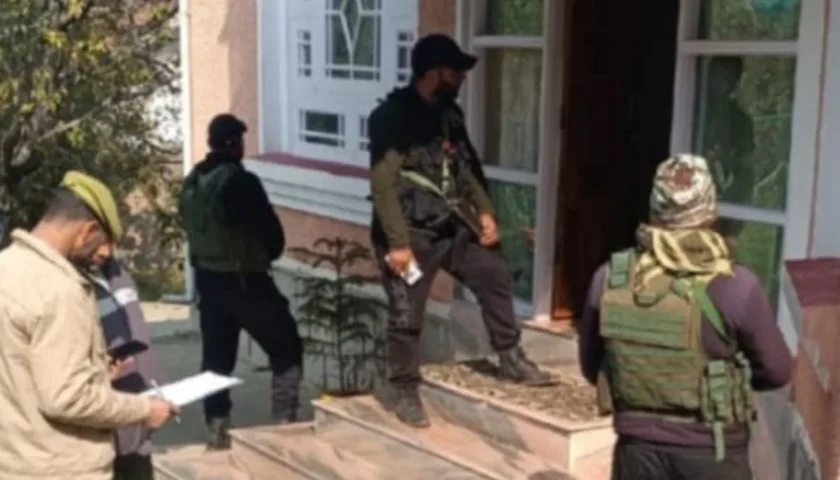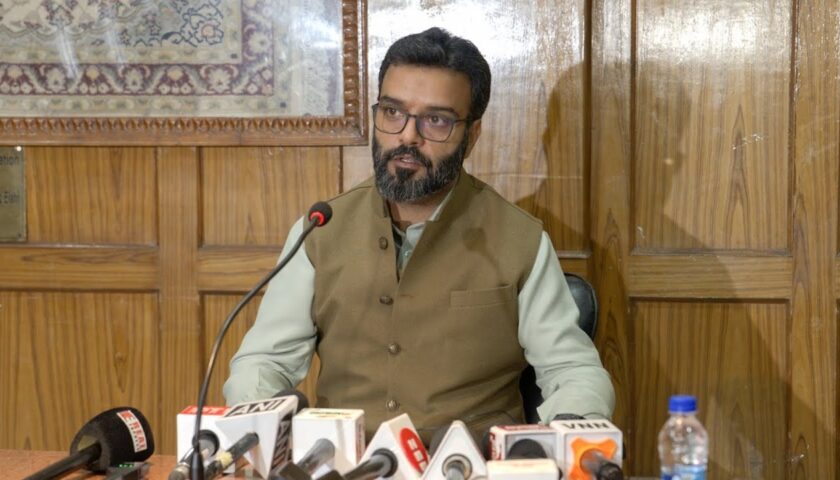Kashmir Winter Power Shock: Demand Surges to 1850 MW as Supply Collapses
By: Javid Amin | 16 November 2025
A Valley in the Dark
As winter tightens its grip on Kashmir, the valley is facing more than just freezing temperatures—residents are grappling with a worsening electricity crisis. Demand has spiked sharply to around 1,850 megawatts (MW), while supply has plunged, creating a widening chasm that leaves homes, hospitals, and businesses in prolonged darkness.
Power cuts of up to 16 hours a day are now a hard reality in some areas, according to local reports. What makes the situation all the more jarring is the contrast between official claims and ground-level experience: while government officials insist there are no unscheduled cuts, daily life for many Kashmiris tells a different story.
This crisis isn’t just technical — it’s deeply social. It touches on household well-being, economic survival, healthcare access, and public trust in institutions. In this detailed article, we explore the causes, impacts, responses, and implications of Kashmir’s winter power shock.
The Current Situation: Demand Soars, Supply Sinks
Demand vs. Supply: A Growing Gap
Local power utilities confirm that Kashmir’s electricity demand in winter has risen sharply to about 1,850 MW. Kashmir Life+1 However, supply continues to lag: recent data from authorities shows average availability hovering between 1,489–1,525 MW. While not all publicly reported sources match that exact range, there is strong consensus on a substantial deficit. Kashmir InFocus
This gap is not trivial. When demand outpaces supply, scheduled curtailments become stricter, and unscheduled or distress cuts become more likely — leaving people without reliable access to power when they need it the most.
Impact on Residents: Cutting Off Daily Life
The shortfall in electricity isn’t just a number — it’s a lived crisis. Reports from across Kashmir highlight:
-
Daily power cuts of up to 16 hours in some localities, severely disrupting homes. Kashmir Indepth
-
Residents relying on backup generators or falling back on traditional means of coping with the cold when electricity fails.
-
Interrupted household routines: cooking, heating, and even online education are affected when power is so unpredictable.
Government Claims vs. Reality
On paper, the administration paints a more reassuring picture. In a written reply to the Legislative Assembly, the Power Minister stated that there were no unscheduled power cuts during the previous winter. Kashmir Indepth He further claimed that curtailment plans were now standardized: feeder cuts were capped at 0, 2, or 4 hours depending on technical and commercial loss levels. Free Press Kashmir
But many Kashmiris strongly disagree. Independent reports, citizen testimonies, and data reviewed by local media point to frequent outages, even in so-called “essential” or “low-loss” feeders. Kashmir InFocus+1 For many, there’s a clear disconnect between policy statements and daily realities.
Effects on Daily Life: Where the Crisis Hits Hardest
The power crisis in Kashmir isn’t just an inconvenience — it disrupts the very fabric of daily life, affecting households, businesses, and essential services alike.
At Home: Cold, Cooking, and Connectivity
-
Heating & Cooking
With erratic power, households struggle to run electric heaters, stoves, and other appliances. In winter, heating is not a luxury — it’s a necessity. Power cuts force families to fall back on traditional heating methods (like kangris, wood stoves) or to ration their electricity use, with potentially serious impacts on comfort and health. -
Online Education
Many students rely on digital platforms to attend classes. Long blackouts, especially during evening study hours, disrupt their learning. Connectivity may be lost, devices may run out of charge, and progress stalls. -
Household Stress
The unpredictability of supply raises anxiety. Families may delay important tasks or avoid relying on powered appliances. There’s also the financial burden: more spending on generators, fuel, or backup systems to stay warm and connected.
On the Economy: Business and Industry Struggle
-
Shops and Workshops: Small businesses, workshops, and retail stores that rely on electrical tools, lighting, or refrigeration face significant losses when power is cut for long durations.
-
Digital Services & Offices: In an increasingly digital economy, businesses that depend on computers, Internet, and communication systems are severely disrupted by power outages.
-
Manufacturing Interruption: Any local industry (even micro or cottage-level) can suffer when machines have to shut down repeatedly or when there’s no fallback system.
Healthcare: Life and Death in the Balance
Perhaps the most critical impact is on healthcare:
-
Hospitals and Clinics: Many healthcare facilities are forced to depend on diesel generators during blackouts, which is expensive and often less reliable.
-
High-Risk Patients: For patients requiring constant power — like those on oxygen support or life-saving devices — outages can be more than just an inconvenience — they can be dangerous.
-
Increased Costs: Running backup power is costly, stretching the budgets of both healthcare providers and patients’ families during a season when costs are already high.
Why Is This Happening? Underlying Causes of the Power Crisis
Understanding why Kashmir is facing this winter power shock requires a look at deeper structural and environmental challenges.
1. Seasonal Drop in Hydropower
Hydroelectricity is the backbone of Kashmir’s power infrastructure. But in winter:
-
Rivers like the Jhelum and Chenab, which feed hydro plants, see dramatic reductions in flow as temperatures drop and water sources freeze or slow.
-
According to local officials, hydropower generation may drop by as much as 84–90% in the peak of winter.
-
This steep fall leaves a huge gap in generation capacity, forcing reliance on external power or other forms of generation.
2. Infrastructure Constraints & Grid Limitations
Even when power is available, moving it efficiently across the Valley is a challenge:
-
Transmission bottlenecks: Some grid stations, especially at key nodes like Zainakote (220 kV), are under constraint, limiting the distribution of power.
-
High loss feeders: Some areas still operate on lines with high technical and commercial losses. This means even when electricity is available, a large portion is lost before reaching end-users.
-
Aging infrastructure: The grid needs modernization to handle rising winter loads, especially in remote or difficult-to-reach areas.
3. Rising Demand
Several demand-side trends are exacerbating the crisis:
-
Increase in Connections: More households and businesses are now connected to the grid, raising the base demand.
-
Heating Load: Winter demand is not just from lights or appliances — heating load (electric heaters, water heaters) pushes up consumption significantly.
-
Economic Growth: Digital services, small enterprises, and local industries rely more on electricity, leading to a higher baseline demand even in off-peak times.
4. Dependency on External Power
Because local hydro generation falls drastically:
-
Kashmir depends heavily on coal-based and solar power imported from other states during winter.
-
This imported power increases costs and introduces vulnerabilities — both financial and technical.
5. Climate Change & Hydrological Shifts
Experts warn that climate change may be compounding the problem:
-
Altered snow and glacier melt patterns are disrupting river flows, reducing the water available for hydropower.
-
Prolonged dry spells, lower rainfall, and shifting precipitation cycles are stressing water-dependent power plants.
-
Without adequate reservoirs or storage, Kashmir’s run-of-the-river hydropower systems struggle to buffer against seasonal variability.
Government and Institutional Responses: Promises & Challenges
In response to the crisis, authorities have taken several measures. But there’s a mix of optimism, skepticism, and frustration at how these are being implemented and experienced.
Smart Metering & Infrastructure Upgrades
-
Smart Meters: KPDCL (Kashmir Power Development Corporation Ltd) has accelerated its rollout of smart meters. According to recent reports, more than 1.25 lakh meters have already been installed in Srinagar, with further expansions planned.
-
Grid Modernization: Key substations (like Zainakote and Pampore) have been upgraded. New transformers and stabilizers aim to make the system more resilient under heavy winter load.
-
Priority Corridors: To protect essential services, “priority power corridors” are being maintained — ensuring that hospitals, water facilities, communication towers, and other critical infrastructure receive stable power.
-
Rapid Response Teams: Quick-response mobile crews equipped with repair kits and GPS tracking have reportedly been put on the ground to deal with grid issues, especially in snow-prone, remote zones.
Policy Measures & Power Procurement
-
The government has negotiated additional power allocations during winter months, leveraging the SHAKTI policy and central pool allocations.
-
They claim that distress/unplanned cuts have been restricted by enforcing a capped curtailment model — 0 to 4 hours depending on feeder loss levels.
-
Efforts are underway to reduce commercial and technical losses (AT&C losses) via better billing, disconnection of illegal connections, and usage monitoring.
Renewable Energy Push
-
Rooftop Solar: There is growing interest in rooftop solar (“Surya Ghar” type initiatives) in the Valley, intended to reduce dependency on centralized generation, though adoption remains limited due to cost, awareness, and infrastructure barriers.
-
Hydropower Incentives: Experts and officials are pushing for renewed incentives for hydropower projects to build more capacity and storage, given Kashmir’s large hydro potential. kashmirvision.in
Tensions and Reality Check: Public Frustration vs Official Optimism
Claims vs Complaints
-
While the government insists there were no unscheduled cuts, ground reports from residents strongly refute this.
-
According to KPDCL and other official sources, curtailment schedules have been normalized and capped. But locals say the promised schedules are not always followed; many experience distress-level outages, particularly in high-loss feeder zones.
-
Data from utility operations suggests that the availability of electricity has indeed been constrained.
Infrastructure vs Trust
-
There is cautious optimism among some citizens about the modernization and repair work — the grid upgrades, smart meters, and response teams are seen as steps in the right direction.
-
However, for many residents, repeated cycles of promises and power outages have eroded trust. People question whether new investments will translate into real, consistent service — or just better PR.
Cost Burden & Inequity
-
The reliance on imported power (coal, solar) makes electricity costlier in the long run. The financial burden of running backup systems (generators) falls heavily on households and small businesses.
-
Inequities persist: remote areas and high-loss feeder zones often bear the brunt of outages, while central or low-loss areas may see more stable supply. This fuels frustration and social tension.
Why This Matters: Social, Economic & Political Stakes
Social Impact: Alienation & Disillusionment
The power crisis is more than an infrastructure problem — it’s deeply social:
-
Sense of Neglect: For many in Kashmir, recurring winters of long blackouts reinforce a broader feeling of neglect and marginalization. Reliable electricity is seen not just as a utility, but as a basic right.
-
Mental Health: Unpredictable power, especially during harsh cold spells, adds mental stress. Families worry about health, safety, and survival during long blackouts.
-
Community Anger: The disconnect between government claims and lived reality can fuel protests, civil discontent, and political fallout.
Economic Consequences: Growth Under Threat
-
Business Losses: Shops, small industries, and home-based businesses suffer. Lost productivity, damaged equipment, and revenue slump are common outcomes.
-
Increased Operating Costs: Dependence on backup generators means more spending on fuel, maintenance, and repairs.
-
Barrier to Growth: For Kashmir to grow economically, stable power is essential. The crisis threatens investments, especially in technology-driven sectors.
Policy Challenge: Sustainability vs Urgency
-
Investing in Renewables: The drop in hydro generation underscores the need for long-term investments in solar, wind, and hydropower reservoirs. But infrastructure building takes time, funding, and political will.
-
Grid Upgradation: Enhancing distribution networks, reducing losses, and modernizing substations are critical. Without them, even imported or renewable power may not reach users efficiently.
-
Accountability & Governance: Transparency in curtailment, grievance redressal for outages, and better communication with the public are essential to rebuild trust.
Security & Political Dimension
-
In a politically sensitive region like Kashmir, basic service failures (like power cuts) can quickly become symbols of disenfranchisement. The power crisis could feed into larger narratives of governance, rights, and equity.
-
Long-term neglect of energy infrastructure may be interpreted in political terms — not just as a technical failure, but as part of a broader governance challenge.
What Needs to Be Done: Pathways Forward
Addressing Kashmir’s winter power crisis requires a multi-pronged, sustained strategy — combining immediate relief with long-term structural change.
-
Boost Hydropower Resilience
-
Explore construction of storage reservoirs where feasible, so run-of-the-river hydro plants can buffer dry winter months.
-
Invest in modernizing turbines and infrastructure, so existing hydropower plants operate more efficiently in low-flow seasons.
-
-
Scale Renewables
-
Accelerate rooftop solar programs (like Surya Ghar) by providing subsidies, technical assistance, and financing.
-
Explore community-level solar or hybrid microgrids in remote and high-demand areas.
-
Evaluate wind potential in mountainous zones — a complementary source during low-hydro months.
-
-
Upgrade the Grid
-
Expand and modernize transmission lines, especially in bottlenecked zones like the Zainakote grid.
-
Deploy smart grid technologies to dynamically manage load, reduce losses, and respond to outages more quickly.
-
Strengthen feeder-level segmentation so that essential services (hospitals, water supply) are prioritized reliably.
-
-
Demand-Side Management
-
Promote energy-efficient heating solutions (insulation, efficient electric heaters, passive solar) to reduce winter load.
-
Accelerate smart meter deployment and use data analytics to manage and flatten peak demand.
-
Conduct public awareness campaigns on energy conservation, especially during peak hours.
-
-
Improved Governance & Transparency
-
Publish real-time outage trackers or dashboards accessible to the public.
-
Set up grievance redressal mechanisms (apps, helplines) for outage complaints, billing issues, and curtailment clarifications.
-
Conduct independent audits of curtailment practices to ensure compliance with promised schedules.
-
-
Financial Strategies
-
Leverage central and international funding for renewable energy infrastructure.
-
Explore power banking arrangements more aggressively to manage seasonal demand fluctuations.
-
Use fiscal incentives to reduce the cost burden on low-income households for rooftop solar adoption.
-
-
Policy & Institutional Reform
-
Reassess and potentially reform existing power purchase agreements to make them more winter-resilient.
-
Strengthen institutional coordination between Jammu & Kashmir Power Development Department (PDD), distribution companies (like KPDCL), and central agencies.
-
Involve local communities in planning, so energy strategies are inclusive and context-aware.
-
Risks and Challenges
While the above pathway is promising, several risks could complicate progress:
-
Funding Limitations: Major infrastructure projects (storage reservoirs, grid upgrades) need significant investment — securing financing may be difficult.
-
Implementation Delays: Bureaucratic inertia, procurement hurdles, and logistical issues (especially in mountainous terrain) could slow down execution.
-
Public Distrust: Past unmet promises may make citizens skeptical of new announcements — restoring trust will require consistent action, not just words.
-
Climate Uncertainties: Changing precipitation patterns due to climate change may affect hydropower viability; projections may not always hold.
-
Technical Capacity: Maintenance of advanced grid technology, smart meters, and distributed renewables requires local capacity building and long-term institutional support.
Bottom-Line: A Winter Test of Resilience
Kashmir’s winter power crisis is not merely a seasonal inconvenience — it is a test of governance, infrastructure, and community resilience. When power demand soars to ~1,850 MW and supply slides to around 1,500 MW, the result is more than technical shortfall: it’s a disruption of daily life, a strain on essential services, and a blow to public confidence.
While the government has introduced reforms — smart meters, grid upgrades, priority corridors — the lived reality for many Kashmiris still includes long outages, uncertainty, and hardship.
To break this recurring cycle, Kashmir needs more than short-term fixes. It requires bold investments, transparent governance, and a real commitment to long-term energy security. The people deserve a winter where light doesn’t flicker out, and their homes don’t go cold — and to achieve that, both policymakers and citizens must work together.




